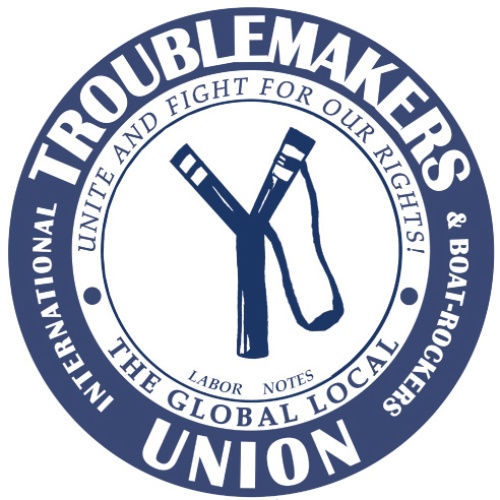Union health plans will suffer under Obamacare

By James McGee, Labor Notes
"From each according to his ability, and to each according to his need": does this sound like a model for health care reform?
At a January meeting of the Labor Campaign for Single Payer, a French unionist used these words to describe how health care works in France. But you don't have to travel to France to see the principle in action. It's at work right here within the U.S. labor movement.
That model is "multiemployer health care plans," bargained by unions and jointly administered with employers, that provide continuous coverage even for part-time and seasonal workers through periods of unemployment (for more details, click here and scroll down to the sidebar titled "How do Taft-Hartley plans work?").
Yet what should have been a model for health care reform now faces an uncertain future. Because the Affordable Care Act (ACA) tilts the playing field to disadvantage multiemployer plans, this decades-old gain of the labor movement may be irreparably damaged.
Funds have been generous
In a health care market that thrives on exclusion, multiemployer funds cover members and families not just while they are working intermittently but through periods of unemployment and even during retirement. They provide the same coverage for everyone, regardless of age, family status, or health status.
This means that to the employer, they cost more, per member, than traditional single-employer plans. The increased cost puts member employers, 90 percent of them small, at a competitive disadvantage.
As health care costs have become unsustainable, so has the funds' generosity -- and their ability to subsidize periods of low employment. Unions hoped that the ACA, with its requirement that more employers provide health insurance, would level the playing field by bringing more small employers into the system.
Instead the ACA appears to disadvantage multiemployer funds by permitting competitor employers access to the new health care exchanges while denying the funds the same access. The result is that employers will have every incentive to get out of the funds when union contracts expire.
Advantages of leaving
As it is now, Jim's (unionized) Plumbing Shop pays into a fund per hour for all his employees, full- and part-time. But Jim competes against Joe's non-union Plumbing Shop. Joe probably covers only his full-time permanent workers, with a traditional insurance plan.
In the new exchange world, Joe will be eligible for tax credits to make it easier for him to cover his employees. He will have access to a more stable insurance market through the exchange that will likely lower his costs. Or he may decide to stop offering coverage and just give his employees money to buy coverage on the exchange.
Jim will not have access to any of these options -- unless he manages to defeat the union and opt out of the plan altogether.
If Jim left the multiemployer plan, he could lower his health care expense by taking advantage of subsidies available in the exchanges. Subsidies can go to those earning less than 400 percent of poverty ($90,000 for a family of four, $60,000 for a family of two). Jim could pay his workers to purchase health care on the exchanges, and save money.
Even employers of 50 or more, who are subject to the "free rider" penalty if they don't offer insurance, can come out ahead. The lobbying group for multiemployer plans offers this example: a family at 200 percent of poverty purchases a $10,000 plan on the exchange. With subsidy, that coverage would cost only $2,778.
The employer could give the employee the $2,778, throw in say $600 for the worker's increased taxes, pay the $2,000 penalty -- and still save almost half.
Many experts argue that the exchanges will encourage employers in general, especially in low-wage industries, to abandon coverage. Where Obamacare was first tried, in Massachusetts (where it was called Romneycare), employers did not drop their insurance in big numbers. But Massachusetts does not offer the level of subsidies that the ACA does.
What's the solution?
Several national unions are working with the administration to see if multiemployer plans could be allowed to use the subsidies. But so far the administration has not been very open to such fixes, which would be complicated in any case.
If multiemployer plans are decimated by the ACA, it will be doubly a tragedy, because these plans offer a model for health care reform that already addresses many of the issues the ACA was supposed to address. They offer small employers coverage with minimal overhead. They do not exclude people by using their medical information to evaluate them. And they address one of the recognized problems with the ACA -- "churn."
"Churn" is how health policy wonks describe people who will move between Medicaid, subsidies on the exchange, and coverage from a job. At each of those stops, the patient/employee experiences different benefit designs, provider networks, reimbursement levels, and cost sharing. Plus an application process, and more delays.
As the policy wonks fret, the model was there all the time. Follow the example of the multiemployer plans.
The regulations to implement the ACA are not yet settled. But it's clear: failure to level the playing field could cause employers to stop participating and many plans to go under.
It's not surprising that policymakers ignored the model of the multiemployer plan. The ACA was designed by insurance executives, who only understand a model where insurance is paid for in full, one month at a time, by a single individual, family, or business.
The other reason the multiemployer plan escaped the comprehension of policymakers is the logical extension of the model. If you expanded the concept to a national or regional level, you would have to replace the current, sometimes cumbersome, eligibility rules with universal eligibility. Then it would look like -- France.
* * *
James McGee is executive director of the Transit Employees Health & Welfare Fund, which provides benefits to workers in the Metro system in Washington, D.C. He is also a member of Plumbers Local 520. Twitter @Jimmy1920. A version of this article appeared in Labor Notes #408, March 2013. Don't miss an issue, subscribe today.
Tags
Labor Notes
Labor Notes is a media and organizing project that has been the voice of union activists since 1979.
